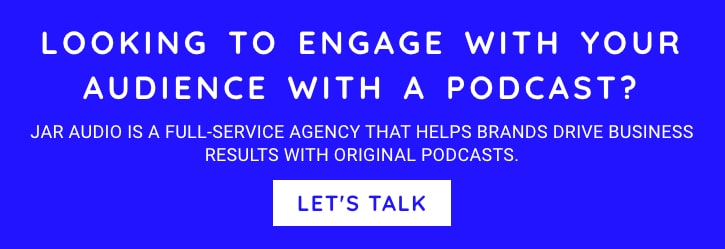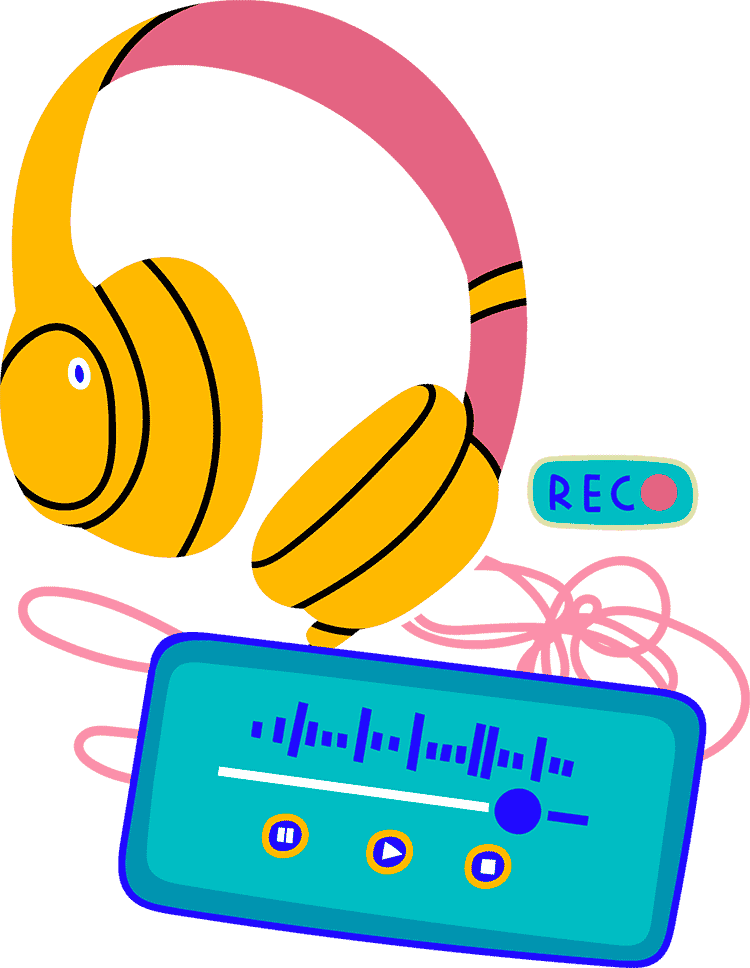How to put your audience first and why it’s the best thing you can do for your company.
If you’re looking to work a branded podcast into your content marketing plan, your audience should be your top priority. A well-made series will consider your ideal supporters, while prioritizing their interests and striving to meet their needs.
Below, you’ll find a list of dos and don’ts essential to creating not just any podcast but one that’s tailored to your audience and your brand identity. Follow this guide, and you’ll be one step closer to boosting loyalty, increasing awareness, and building brand affinity.

It’s all about your audience.
Don’t create the world’s longest commercial.
With a branded podcast, it can be tempting to focus on your company’s bragging rights and to deliver a podcast that tells listeners what you’re doing, why you’re great, and about your brand identity. This is a massive no-no and should be avoided at all costs.
Do you want to listen to a 30-minute commercial or business pitch while you’re on a run or out to grab your morning coffee? Of course not. But, if you truly believe in your business, the urge to sell and/or promote can be seriously tempting.
At the end of the day, you’ll want to remember this your podcast should be about your audience, not your company.

Try not to “sell” too much.
Do keep that “sales pitch” subliminal.
Consumers choose with their hearts these days and, when it comes to content marketing, the most powerful approach will not only speak to those hearts, it will do so subliminally.
As we discussed above, a great podcast will not explicitly discuss why listeners should choose your brand and, in many cases, will hardly mention your brand at all. So, how can a branded podcast build your business? Through subtextual messaging of course!
Effective content marketing relies heavily on the story you tell about your values, mission, and purpose, but that message will be implicit, and received by way of the guests you feature, the approach you take, and the ideas you prioritize within your series. By creating a podcast that dives into the issues, concerns, people, and topics that are important to your audience, you will begin to develop loyalty, affinity, investment and reciprocity.

Consider accessibility.
Don’t neglect accessibility.
Put simply, you may already be hurting your audience if you’ve failed to consider accessibility. Appropriate accommodations for folks with disabilities are essential to meeting a wide array of listener’s needs.
If you don’t want to miss the mark, here are some questions you can ask yourself:
-
How can a person with hearing loss enjoy our content?
-
If a listener can’t hear our podcast, will they have the option to lip read?
-
Can a person with vision impairment access our series?
-
What if someone needs our guests to speak more slowly?
-
Does our graphic design consider audience members that are color blind?
Of course, this list is by no means exhaustive — and will continue to grow and change as we learn more about disability. To get your series on the right path, though, you can check out this crash course in podcast accessibility.

Offer something in return and build reciprocity.
Do look to interests to identify needs.
When it comes to assessing the needs of your audience, it’s important to look at the interests they hold that connect with your product, service, or industry. This jump can be very obvious, or a bit more complex, depending on the nature of your company.
For example, Expedia’s podcast Out Travel the System identifies needs explicit to folks who spend their dollars and cents within the travel industry. It offers listeners a mountain of valuable data, with the help of over 20,000 industry experts, that provides helpful tips, thoughtful insights, and useful facts for frequent flyers and the travel hungry.
A less obvious jump can be seen in the massively successful podcast of Saje Natural Wellness, also a giant in its industry. While this is a company predominantly known for its essential oils and diffusers, its podcast Well Now is more explorative, diving into all things holistic and natural remedy. They did not, conversely, make a podcast about essential oils.
While the approach varied, each of the above-mentioned brands ultimately created a series which was based on their target audience, and took into consideration what their needs, interests, values, and common queries might be.

Create dialogue with your audience.
Don’t overlook the importance of dialogue.
To create an exceptional podcast precisely tailored to your ideal audience’s needs, you should be communicating with them at every opportunity. You can use existing channels such as social media or your email list to engage with them and find out how they’re living, what they care about, and why they are (or are not) listening.
Assumptions only get us so far and, at the end of the day, consistent communication has the potential to change the game when it comes to your content marketing strategy.

Gain valuable insights and feedback.
Do turn to analytics for further feedback.
It should probably go without saying that analytics are essential to all content marketing and play a crucial role when it comes to… well, analyzing.
You’ll want to be sure to use a hosting service that allows you to access this data often, and easily. While we are of course seeking an invested, long-term following — and prioritizing audience quality over quantity — KPIs like your number of downloads and listen-through rate provide valuable feedback that should absolutely inform what you’re doing.

Your audience is people. Treat people like people.
Don’t forget to address your audience personally.
If you want your audience to feel seen, heard, and valuable to your hosts, guests, and company, you’ll want to make sure to address them in every episode of your series.
While it’s obviously not possible to speak to Mark in Alabama and ask him how he’s doing with his marathon training, we do have the opportunity to connect with our listeners personally. Through thoughtful questions, a tip of the hat or a spirited sidebar, we can create an atmosphere of camaraderie.
Here are some examples of language that will helps make your podcast feel like a two-way street:
-
“Based on what we’ve learned about all of you…”
-
“If you’re as shocked as I am right now…”
-
“I’m sure you’ve peeped who today’s guest is and, like me, are excited beyond belief!”
Also, don’t forget to thank them. A little gratitude never hurt anyone, and an audience that feels seen and appreciated is an invaluable commodity.

Put people first.
Putting people before your company.
This might sound unusual, granted, but the bottom line is that when it comes to content marketing, you’re going to have to think first about your ideal audience — and then about your company.
This is an essential step to any effective content-focused strategy. Your audience members become your clients, consumers, and supporters, after all. Without these folks, where would your brand be?
Ready to get started? We can help. Reach out to JAR for support in finding your ideal audience, and building the podcast they want and need.
Roger Nairn is the Co-Founder & CEO of JAR Audio



